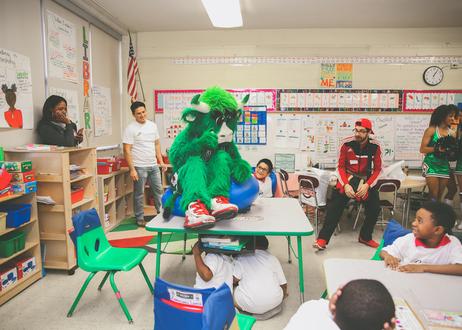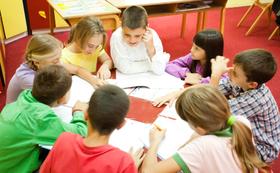In the past decade, public awareness of our planet’s natural resources has grown, and with that understanding has come to a movement in living in environmentally sustainable “green” ways. While just a few decades ago recycling was a fringe activity, today it is a widespread practice. Hybrid vehicles have gone from fantasy to reality.
As national interest in living sustainable and eco-friendly lifestyles continues to grow, a number of public schools are joining the green movement, designing green curricula for students at all levels. In fact, some charter schools are now based around the ideals of green living.
This TED Talk discusses teaching sustainability in schools.
Green Charter Schools
The New York Times reports that across the country, public charter schools that are based around a “green” theme have been springing up. The Green Charter Schools Network, which is based in Madison, Wisconsin, says it has counted about 200 green charter schools nationwide, according to the Times. These green charter schools serve several purposes that both benefit the earth and their students’ futures.
Preparing Students for Work in the Sustainable Energy Industry
Some charter schools focus on technical skills that will prepare students to find work in the “green collar” jobs that are frequently touted as a part of a growth industry.
The Times article mentions Manhattan’s Urban Assembly School for Green Careers, which opened in Fall 2009 with a ninth-grade class and focuses on “job skills needed for the design and operation of energy-efficient buildings.” Students at the new school benefit learn skills such as installing insulation and solar panels, which prepares them for entering the work force or pursuing college-level engineering work.
This video offers suggestions for teaching green.
Making Social Justice Connections
Other green charter schools take a more social justice-based approach. At Brooklyn’s Green School, the Times reports, students make public service announcements about smoking and air quality in their community.
Across the country, in Los Angeles, Alison Suffet Diaz founded the Environmental Charter High School with an explicit focus on making connections between environmental issues and the low-income communities in which students live. Poor communities, Diaz tells the Times, are especially affected by environmental issues, such as contamination from industrial sites.
Green Lessons Increasingly Popular in Mainstream Public Schools
Green curricula are not limited to these specialized charter schools, of course. The Times quotes Randall E. Solomon, executive director of the New Jersey Sustainable State Institute at Rutgers University, on this issue. Lessons related to sustainable energy use and humans’ impact on the environment are not limited to charter schools, he says. “It’s also mainstream public schools that are taking this on.”
Edutopia, a print and online education journal funded by the George Lucas Educational Foundation, offers a “Go Green Database” on its website, where teachers can find lesson plans, resource lists, and field trip ideas related to specific environmental issues such as “Energy Conservation,” “Waste/Recycling,” “Water,” and “Air/Climate.”
The Green Education Foundation, meanwhile, is a nonprofit foundation that is entirely focused on providing “environmental education resources” to K-12 classrooms and youth groups. They organize a yearly National Green Week and offer curriculum and lesson plan ideas for teachers.
Critics of Green Lesson Plans Fear a Political Slant
Although the importance of environmental awareness and sustainable living is promoted by a wide range of public figures from across the political spectrum, the trend towards green lesson plans does have its critics. A Fox News article on 2009’s National Green Week says that according to Angela Logomasini, a spokesperson for a free-market environmental policy group called the Competitive Enterprise Institute, green lesson plans can quickly turn into political indoctrination.
Logomasini says that students in taxpayer-funded public schools should be “learning different perspectives from which they can make a critical analysis,” instead of being taught that there is only one correct viewpoint.
However, Heidi Suydam, a conservative environmental blogger writing for the environmental website Red, Green, and Blue, counters such criticism by pointing out that “environmental messages have been presented to children through books and programming for years.” From Dr. Suess’s The Lorax to TV channels such as Animal Planet and the Discovery Channel, messages that encourage environmental awareness pervade children’s lives. The goal of removing all values from school curricula is impractical, Suydam contends.
Although it may continue to ruffle the feathers of those who fear that pro-green messages carry with them an inherent political bias, the rise of green charter schools and movements like National Green Week seems to indicate that the “greening” of public schools will not be stopping any time soon.
Questions? Contact us on Facebook. @publicschoolreview













